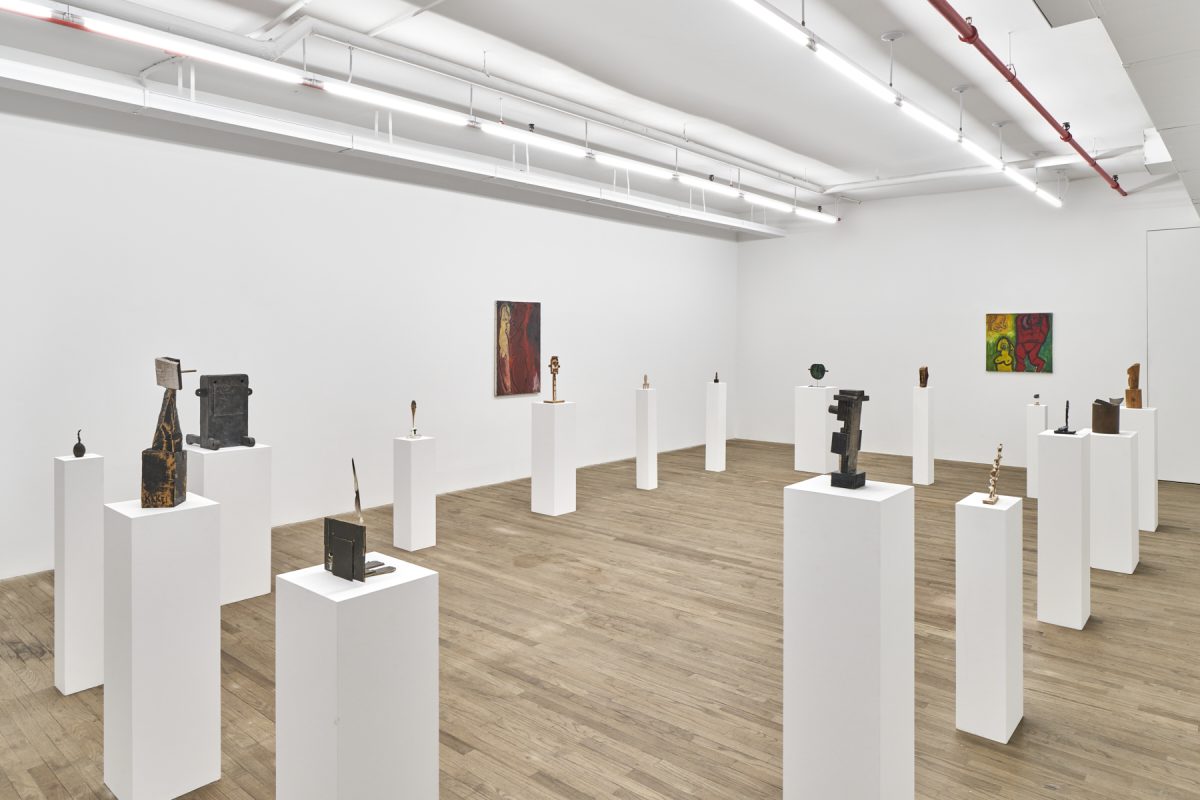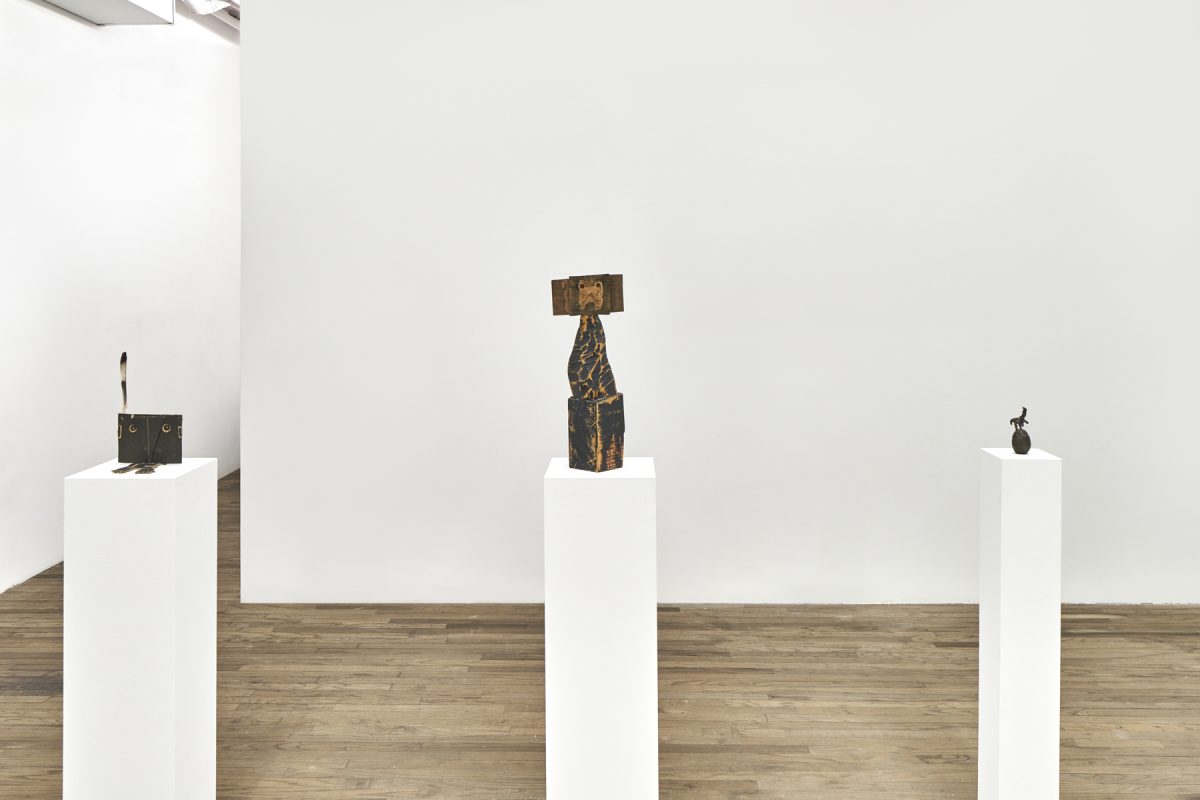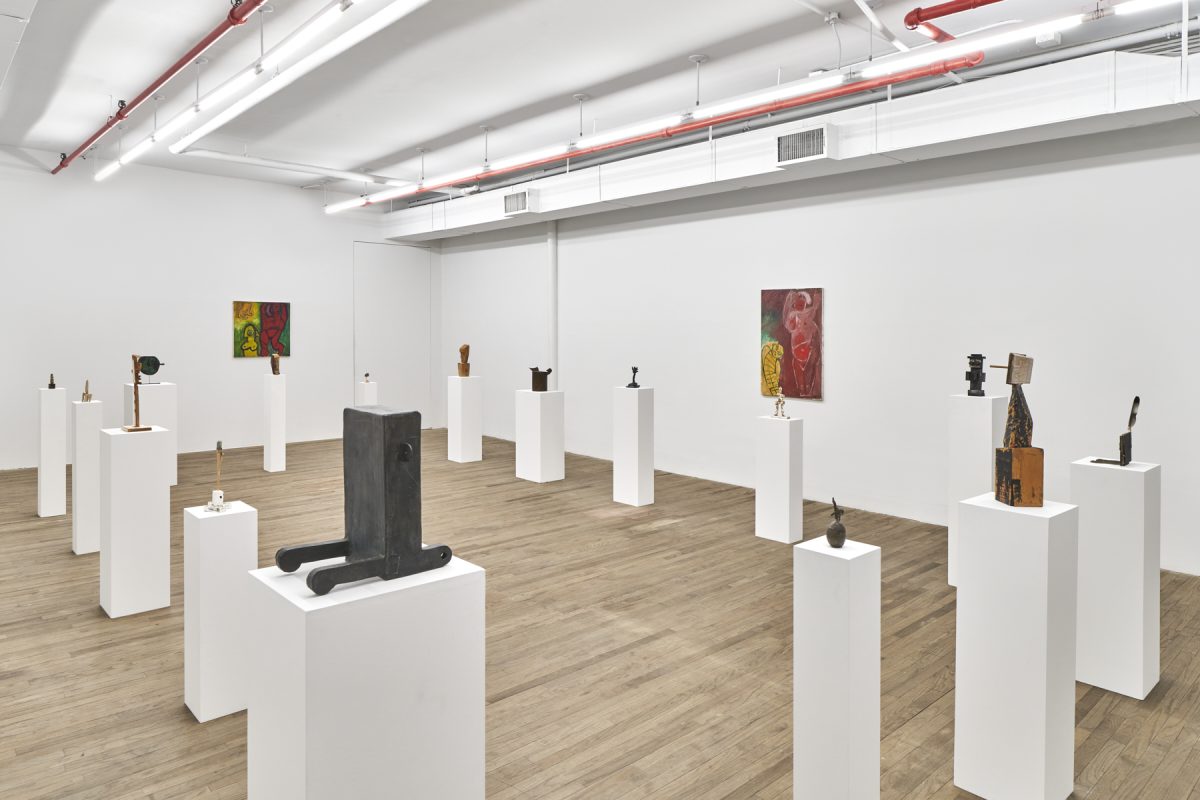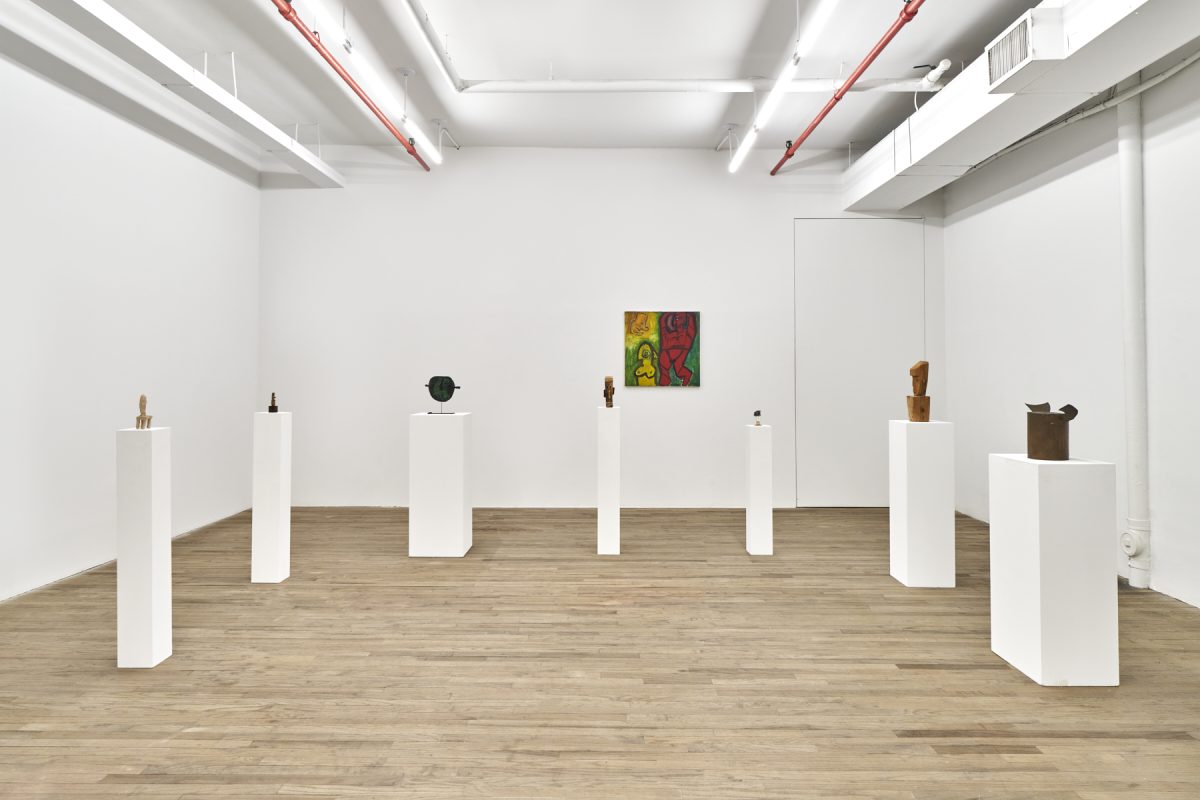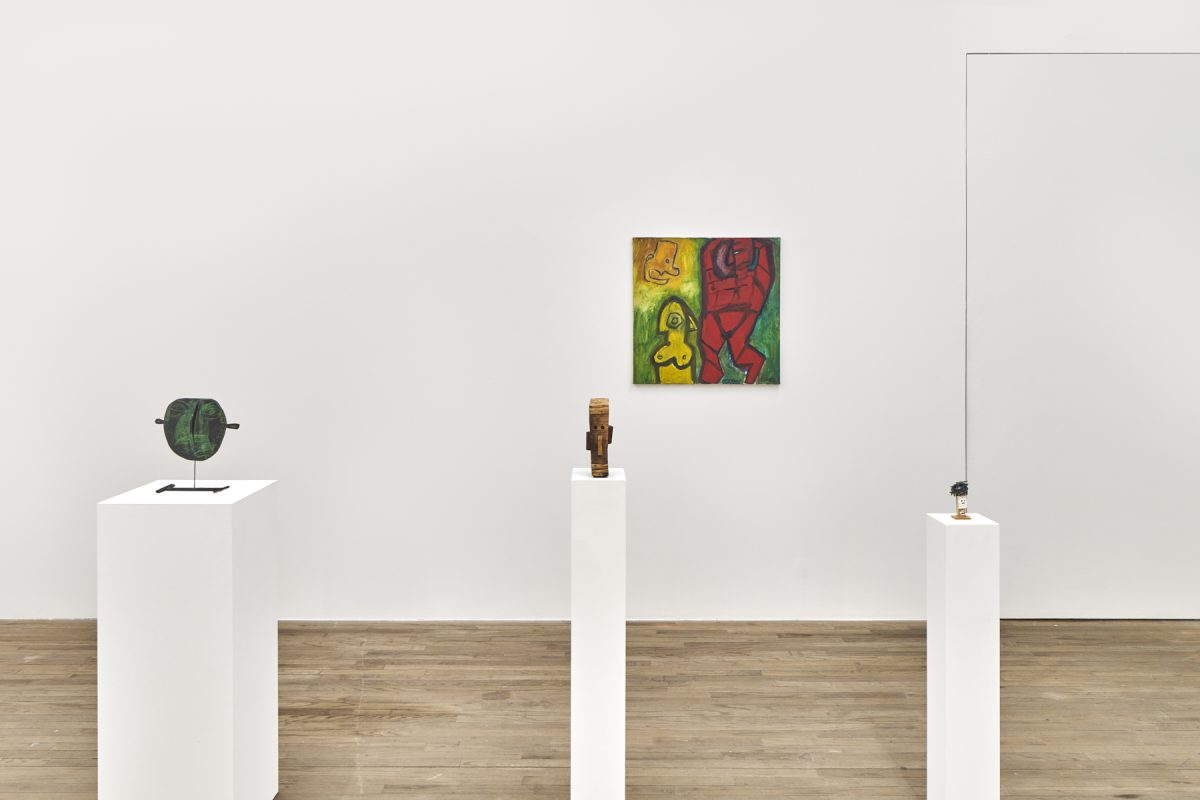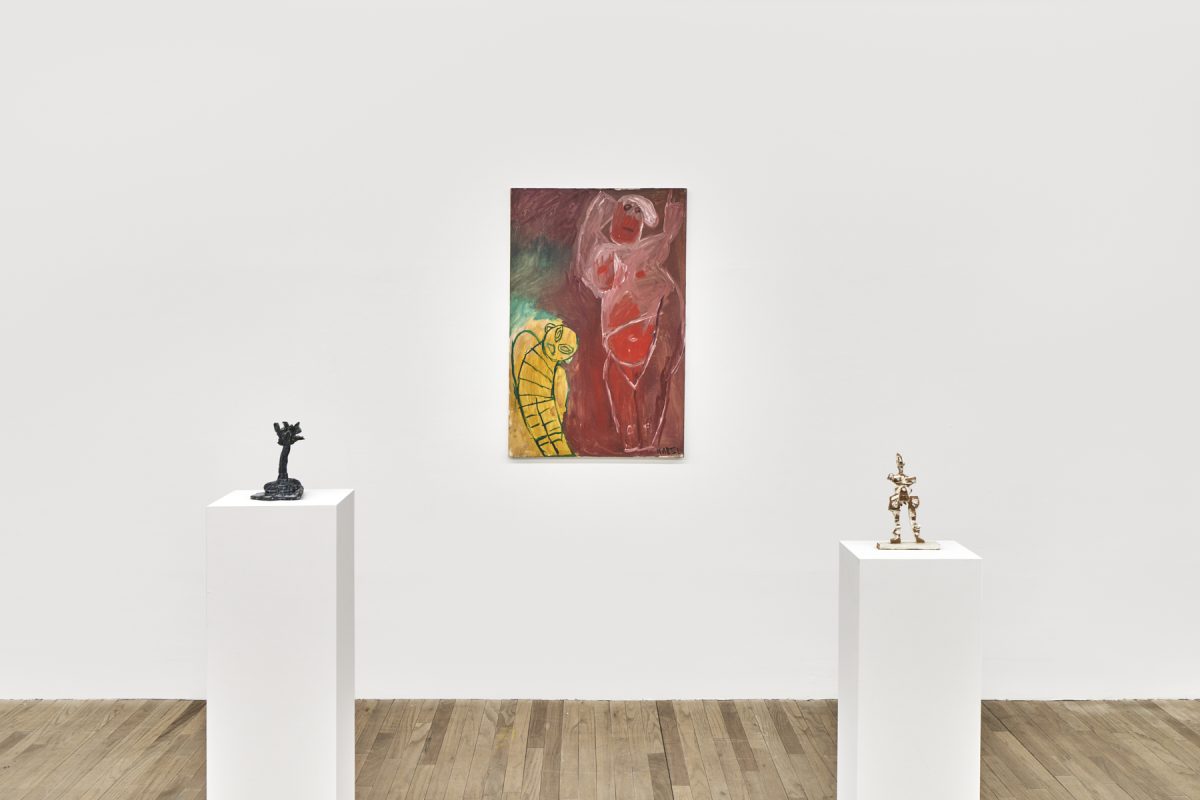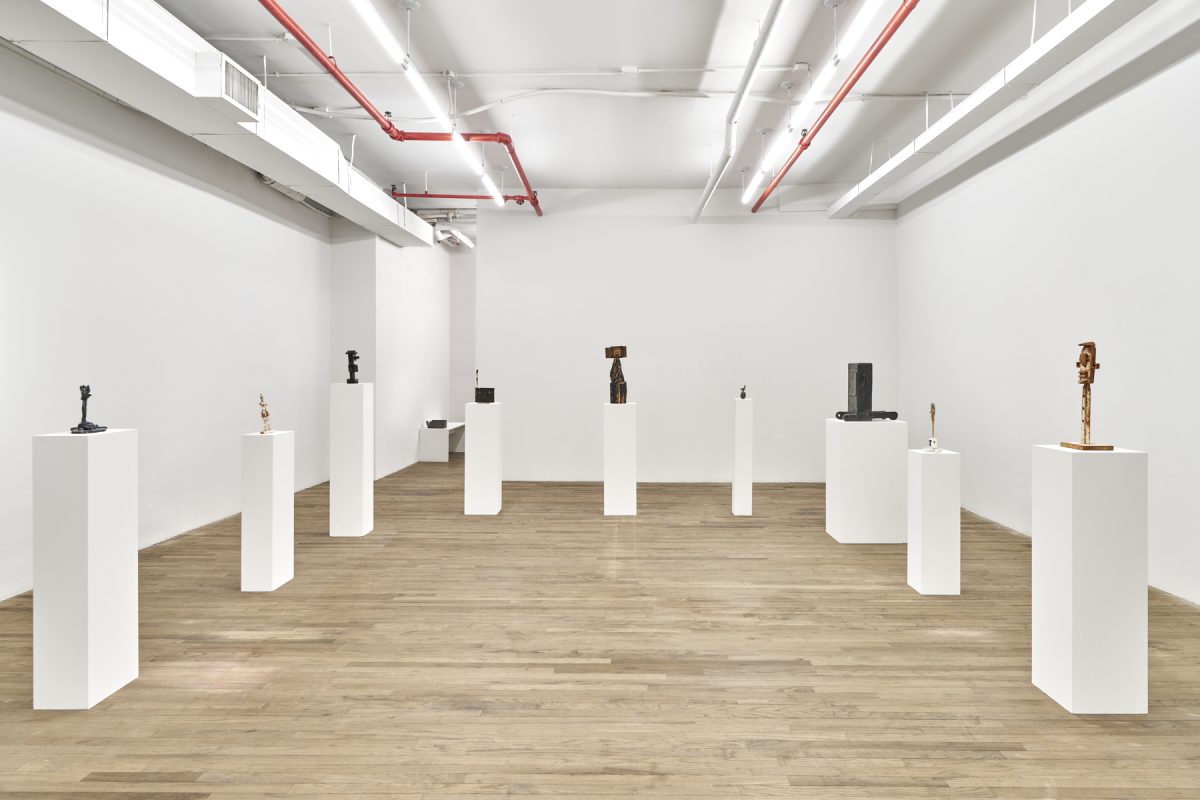
Goro Kakei
- This event has passed.
Goro Kakei (1930 – 2021) established himself as one of the most influential characters in 20th century Japanese art through his highly individual approach to figuration. A pivotal sojourn in Mexico in the 1960s fueled his fascination with the native art of Central America, emancipating his practice from Western canons and unleashing his eclectic creativity. For his first show in the United States, kaufmann repetto is pleased to present a variety of works, spanning from the 1980s to the 2020s, encapsulating Kakei’s rich, genre-defying practice in both sculpture and painting.
Goro Kakei graduated from the Tokyo University of the Arts in 1953 with a major in sculpture. In these foundational years the artist also discovered his faith in Christianity, which became the central focus of his early production. The portrayals of religious subjects – Apostles, Noah, the Virgin Mary – provided the basis of his life-long dedication to the human figure. Soon acclaimed as one of the most interesting artistic positions of his generation, Kakei was invited to represent Japan at the 8th Saõ Paolo Biennial in 1965. His trip to Brazil and other Central American countries eventually lead to a two-year stint as a visiting professor at the University of Veracruz from 1968 to 1970, constituting a turning point for his entire practice. While in Mexico, he explored the native art of Central America, and became fascinated by the simplified, more primitive depictions of the human body, as well as by indigenous techniques such as wood carving. Upon his return to Japan, Kakei had fully embraced this new formal and aesthetic freedom, leaving behind the academic precepts that he had been taught, as well as the hitherto predominant Christian subject matter. In this period, the artist revealed a new consciousness for the political impact of his work, recalling his crucial childhood years and the violence of World War II, whilst also disclosing a more intimate, emotional side through an eloquent nostalgia for his late mother Chau. In fact, a series of sculptural commissions for the public space in his hometown of Shizuoka exemplify this maturation: the artist conceived naked female figures – their abundant body shapes in erratic poses reminiscent of prehistoric mother goddesses – imbued by profound speculations about the human condition. Another characteristic of this new approach is Kakei’s turn towards bricolage techniques, assembling ‘poor’ materials such as wood, paper, wire and everyday objects to create phantasmagoric, body-shaped objects.
The solo exhibition at kaufmann repetto presents a variety of works from the artist’s late stage production exemplary for these developments. A series of totemic wooden sculptures like Cabezon and Equine Face explicitly allude to the influence of Mexican native art and spirituality. Also the delicate clay work Untitled, where a slate bears facial features interwoven with the veins of a leave, evokes the pantheism of indigenous populations. By contrast, the grotesque figures of Cutie or Work-23 make use of minimalistic geometries and found objects, their funny, mask-like faces alluding to the representations of human beings by children. Kakei’s pictorial technique resembles his sculptural one: in the three oil paintings featured in this show, intense blocks of color blend into compositional choreographies, as bizarre faces, and distorted bodies seem to overflow from the two-dimensional space.
Goro Kakei’s solo exhibitions include Goro Kakei: Natsu no Mori, Okawa Museum of Art, Gunma (2011); Kita Ni, Higashi Ni, Asahikawa Museum of Sculpture in Honor of Teijiro Nakahara, Hokkaido (1999); and The World of Goro Kakei’s Sculpture, Contemporary Sculpture Center, Tokyo (1984). Kakei’s group exhibitions include: STORIES, Shizuoka Prefectural Museum of Art, Shizuoka (2021); History of Modern Sculpture of Japan, The Museum of Modern Art, Ibaraki (1991) which traveled to the Tokushima Modern Art Museum (1991); the 8th Saõ Paulo Biennial (1965); and New Generation of Japanese Sculptors, National Museum of Modern Art, Tokyo (1963).
Goro Kakei was the recipient of the 23rd Nakahara Teijiro Award in 1992; in 1981 he received the National Museum of Modern Art, Tokyo Award and the Museum of Modern Art, Kamakura & Hayama Award at the 9th Exhibition of Contemporary Japanese Sculpture, as well as the Kotaro Takamura Prize in 1981. He’s been awarded with the Kobe Suma Rikyu Park Award at the 7th Exhibition of Contemporary Japanese Sculpture in 1977 and the Excellence Award at the 7th Teijiro Nakahara Sculpture Prize in 1976.
Kakei’s works are held in the permanent collections of the The National Museum of Modern Art, Tokyo; Gunma Museum of Art, Tatebayashi and The Miyagi Museum of Art, Miyagi, among others.

